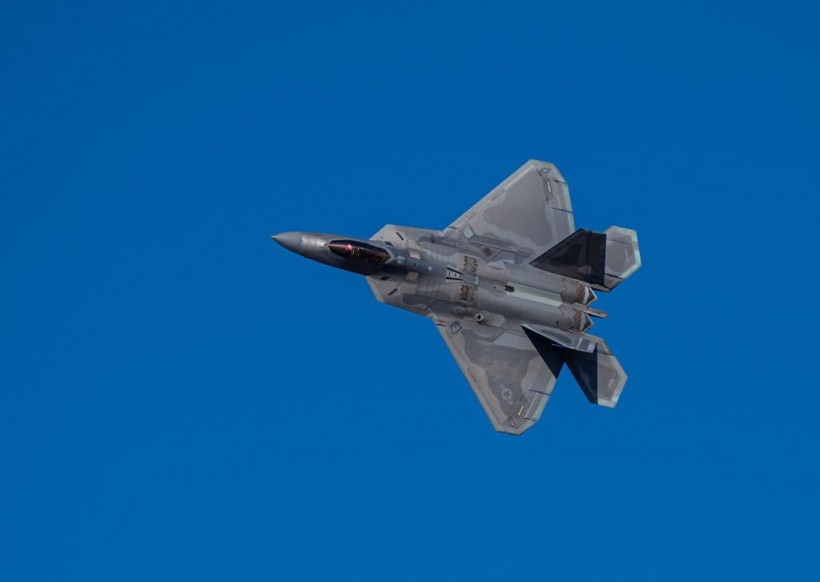
(Photo : MARTIN BERNETTI/AFP via Getty Images)
China develops hypersonic infrared homing missiles to render the F-22 Raptor a target that negates stealth.
A US F-22 Raptor overflies during the International Air and Space Fair (FIDAE) in Santiago on April 6, 2022.
The development of hypersonic infrared homing missiles could strike an F-22 Raptor in seconds once it locks on to it. A US pilot says that the tech is dangerous to the advanced US fighter that is a sitting duck.
US Hypersonic Missile Still in Testing Phase
China is continuing to work on a heat-seeker superfast missile that can strike a speeding vehicle at five times the speed of sound, according to the Eurasian Times.
Research done by Yang Xiaogang, lead scientist of the PLA Rocket Force University of Engineering in Xian, claimed to achieve a step to paint a moving target at high speeds.
In time a hyper-fast missile could hit targets precisely at very long distances. This worries the US regarding how to stop it in flight before striking the target, cited Defense PK.
Chinese scientists asserted last January this year that they had produced next-generation hypersonic weapons with infrared homing functionality unavailable to the US in 2035.
The SCMP added that a prior article mentioned that a ground-to-air hypersonic missile could attack a Raptor second it deploys its weapon. Opposing forces in the Indo-Pacific could add to more interactions.
J-20, F-35 First Time Encounter
US Pacific Command General Kenneth Wilsbach remarked on the first time their stealth fighters have encountered each other.
Changes how the US redeploys its F-22 Raptor stealth aircraft sent to Australia after Chinese expansion in the region, facing a threat from advanced hypersonic Infrared homing missiles
Read Also: Xi Jinping: 5 Things To Know About China's President
Heat-seeking hypersonic technology has nearly no escape. Chinese scientists from the National University of Defence developed the targeting technology which locks on heat sources like the F-22 at low flying altitudes changing warfare.
Heat-seeking or infrared homing is a passive missile guidance system that traces and pursues a target which electromagnetic radiation in infrared. Heat-seekers missiles utilize infrared light, which is seen as heat sources getting detected.
Heat Diffusing Technology
The surface of a missile heats up at higher Mach speeds, and an increase in the heat signal of a target can be overwhelmed by background noise.
No glass material can resist heat and shock waves that would shatter it. This approach had earlier been tried but failed because the cooling air causes significant fluctuation, distorting the thermal signal and likely to result in hazy, flickering, and inaccurate target acquisition.
Chinese researchers developed a compact light device to eliminate an unclear signal that can create an extremely cold stream of inert gas at more than three times supersonic speed. Using 40 micro-vortex generators installed in an air-cooling device to project airflow that cancels the hot turbulence. This technology can attack even stealthy targets.
One of the problems in detecting small objects flying like an F-22 is hard to detect, which makes seeing the target not so easy. Equipped with a heat sensor, a superfast missile will use the data to compute every pixel that is adjusted to track the target; until it hits the objective.
Doubt is there if the Chinese claims are too ambitious for hypersonic weapons; reports of the Chinese development is a threat to the US that is too behind. Developing hypersonic infrared homing missiles capable of hitting an F-22 Raptor will cause problems for the US in the Indo-Pacific.
Related Article: China Develops Hypersonic Rocket Plane Capable of Mach 5+ Speeds Travelling Intercontinental Distances Faster Than the Concorde








